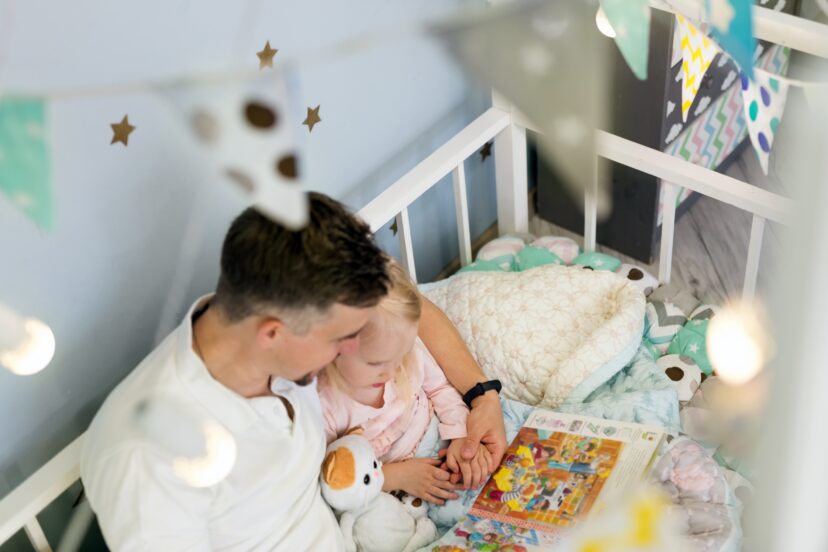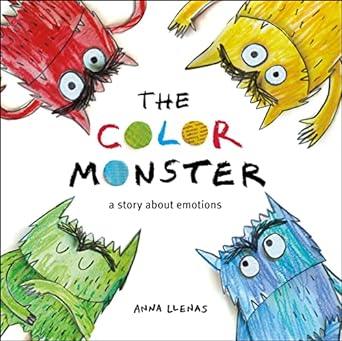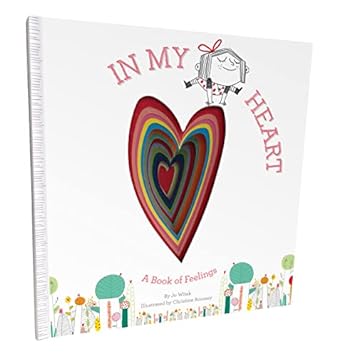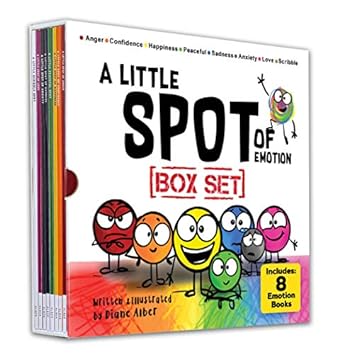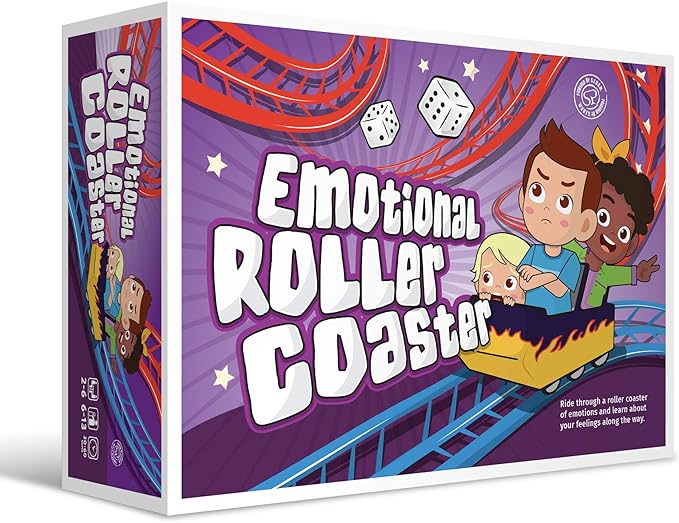Books on Controlling Emotions for Kids: A Guide for Positive Parenting
If you’re reading this, you’re probably searching for resources to help your little ones navigate the sea of emotions they experience every day. It’s no secret that our kids’ emotional growth is just as crucial as their physical development. That’s where books on controlling emotions for kids come into the picture.
The Importance of Emotional Management in Kids
The Role of Emotions in Child Development
Kids are a whirlwind of emotions, aren’t they? One moment they’re a bundle of joy and the next, they’re a storm of tears. This emotional rollercoaster is an essential part of their development. Why, you ask? Well, emotions play a key role in how children understand the world around them. They influence their decision-making process, behavior, and ability to learn and remember. This is where Books on Controlling Emotions can very much help.
Firstly, emotions are a child’s first language. Before they learn words, they express their needs and wants through emotions – cries of hunger, squeals of joy, or tantrums of frustration. By responding to these emotional signals, we teach our children the first lessons of communication, fostering their language development.

Secondly, emotions are critical to social development. As children grow, they start interacting with more people outside their family circle – playmates, teachers, and the friendly neighborhood ice-cream vendor. Understanding and managing their emotions helps them navigate these social interactions successfully. They learn to read others’ emotional cues, empathize with their feelings, and respond appropriately. Can you imagine the chaos if children laughed when their friend was sad or showed anger when they were supposed to cooperate in a game?
Thirdly, emotions and cognitive development are closely intertwined. Have you noticed how your child struggles to concentrate when they’re upset? That’s because strong emotions can hijack their attention, impeding learning and memory processes. By learning to manage these emotions, children can focus better on tasks at hand, improving their academic performance.
Furthermore, emotions drive motivation. The joy of acing a difficult puzzle or the excitement of scoring the first goal fuels a child’s desire to learn and achieve more. Without these emotional rewards, children might lose interest in activities, hindering their skill development.
Top 5 Books on Controlling Emotions for Kids
Now we have looked into the importance of emotional management for your children, let’s dive into my top 5 Books on controlling emotions for kids that can help you anchor your little ones in their emotional storms.
Book 1: “The Color Monster: A Story About Emotions” by Anna Llenas
Why this Book?
“The Color Monster” uses the simplicity of colors to explain the complexity of emotions to children. Each emotion – happiness, sadness, anger, fear, and calm – is represented by a different color. The narrative involves untangling these emotions, much like separating different colored balls of yarn.
This book is not just educational but also interactive. It encourages kids to identify their emotions and speak about them, which is the first step in controlling their them. The vivid and captivating illustrations make it an enjoyable read for young children, keeping them engaged while they learn about emotions.
Book 2: “When Sophie Gets Angry – Really, Really Angry…” by Molly Bang
Why this Book?
Dealing with anger can be challenging for children (and adults!). “When Sophie Gets Angry – Really, Really Angry…” provides a narrative that children can relate to. It shows how Sophie feels when she’s angry, what triggers her anger, and how she copes with it.
The story doesn’t condemn anger as a bad emotion, but instead, offers a healthy way to manage it. Sophie’s coping strategy – taking a moment to calm down and reconnect with nature – provides a practical method for kids to manage their own outbursts of anger.
Book 3: “The Feelings Book” by Todd Parr
Why this Book?
Todd Parr’s “The Feelings Book” covers a wide range of emotions, from feeling brave to feeling left out. Its approach is straightforward and affirming, teaching kids that it’s normal to experience all these emotions. What makes this book stand out is the inclusion of not-so-commonly discussed feelings, like feeling “brave” or “left out”.
This broader emotional vocabulary helps children better express what they’re feeling. The illustrations are simple yet effective, using bold colors and diverse characters that can keep a child’s interest.
Book 4: “In My Heart: A Book of Feelings” by Jo Witek
Why this Book?
“In My Heart” takes a unique approach to explain emotions. This book likens emotions to physical sensations inside a person’s heart – ‘Some days, my heart feels as heavy as an elephant. There’s a dark cloud over my head, and tears fall like rain. This is when my heart is sad.’ This metaphorical way of describing feelings helps children associate their physical sensations with their emotional state.
It introduces a range of emotions, from the everyday happiness and sadness to the less discussed ones like bravery and broken-heartedness. This diverse emotional palette helps children understand their emotions at a deeper level.
Book 5: “A Little Spot of Emotion: Box Set” by Diane Alber
Why this Book?
“A Little Spot of Emotion” stands out because it covers eight emotions – happiness, sadness, anger, fear, peacefulness, love, hope, and worry – and provides coping strategies for each one.
The coping strategies are simple, practical, and age-appropriate, like deep breathing for anger or creating a ‘happy spot’ for sadness. The book also emphasizes that emotions are not ‘good’ or ‘bad’, and it’s okay to experience all of them.
The Impact of Unmanaged Emotions on Kids
Let’s face it, a kid unable to control their emotions is like trying to calm a ship in a storm without an anchor. Without the necessary emotional management skills, children can struggle with interpersonal relationships and academic performance. Even more, these unmanaged emotions can escalate into bigger issues in their adolescent years. Scary thought, right?
First off, unmanaged emotions can negatively affect social interactions. Children who can’t control their emotions may struggle to fit in with their peers. For instance, frequent anger outbursts or excessive shyness can make it hard for kids to build friendships. They might also find it difficult to cooperate with others, leading to conflicts and isolation.
Secondly, academic performance may take a hit. It’s challenging to concentrate on a math problem or a reading task when you’re overwhelmed by feelings of frustration or anxiety. Children who can’t manage their emotions well might show a decline in their school performance. Their ability to think critically, solve problems, and absorb new information might be impaired, holding them back in their learning journey.
Furthermore, unmanaged emotions can lead to behavioral issues. Ever dealt with a tantrum in the middle of a grocery store? That’s what happens when children can’t handle their emotions effectively. This lack of control can manifest as aggression, defiance, or withdrawal, causing distress for both the child and those around them.
The most worrying part is, uncontrolled emotions can lead to mental health problems. Persistent emotional difficulties can escalate into anxiety, depression, or other psychological disorders in the future. Studies suggest that children who struggle with emotional regulation are more likely to experience these mental health issues in their adolescence and adulthood.
Lastly, self-esteem and confidence can be damaged. Children with unmanaged emotions often struggle with feelings of guilt or embarrassment post an emotional outburst. They might start doubting their abilities and self-worth, leading to a drop in their self-confidence.
So you see, unmanaged emotions in children can wreak havoc on their social life, academic progress, behavior, mental health, and self-esteem. It’s essential for us as parents or caregivers to equip our children with the skills they need to understand and regulate their emotions effectively. It’s much like providing them with a compass to navigate the complex world of feelings.
How to Use These Books On Controlling Emotions
Reading these books with your child is an excellent start, but to make the most of these resources, here are a few strategies to consider:
Incorporate Regular Reading Time
Set aside a specific time each day for reading. This habit not only fosters a love for reading but also provides a regular platform for discussing emotions. Choose a calm and comfortable spot, maybe on the couch or in their favorite nook of their bedroom, to make the reading experience more enjoyable.
Discuss the Story
Don’t just read the book. Talk about it. Ask your child how they think the character is feeling and why. Encourage them to relate these situations to their own life. For example, if the character in the book is angry because their sibling took their toy, ask your child how they would feel and react in that situation.
Use the Books as a Reference
In everyday situations, refer back to these books on controlling emotions. If your child is struggling with anger, remind them of how Sophie handled her anger or how the little spot used deep breathing. These references will help your child recall and apply the coping strategies they’ve read about.
Practice Emotion Identification
Use the emotions discussed in these books to help your child identify their feelings. If your child is upset, you could ask, “Are you feeling like the blue color monster now?” Associating their feelings with the characters or situations in the books can make it easier for them to express their emotions.
Role-Play Scenarios
Create role-play situations based on these books on controlling emotions. If the character is sad because they lost their favorite toy, reenact that scene with your child. This activity not only makes the reading more fun but also helps your child understand and manage their emotions in a safe, controlled environment.
Teach Emotional Vocabulary
These books introduce a variety of emotions. Use them to broaden your child’s emotional vocabulary. The more accurately children can name their feelings, the better they can understand and manage them.
Remember, the aim is not to suppress or control emotions but to understand and manage them healthily. It’s okay to feel angry or sad. What’s important is how we handle these feelings, and that’s what these books aim to teach our children.
Final Words From Me
Being a guiding light for your child’s emotional development is no easy task, but with the right resources, it becomes more manageable. Remember, the goal is not to suppress emotions but to understand and manage them. These books on controlling emotions provide an interactive and enjoyable method to do just that!
FAQs
Can these books on controlling emotions substitute professional mental health advice? No, these books are resources to help teach kids about their emotions, but they cannot replace professional help if your child is struggling with mental health issues.
At what age should I start teaching my child about emotions? You can start teaching kids about emotions as soon as they can understand language. The earlier, the better!
How regularly should I read these books on controlling emotions with my child? Consistency is key in learning, so try to incorporate these books into your regular reading routine.
Can these books help my child deal with negative emotions only? No, these books help children understand a range of emotions, both positive and negative.
5. What if my child doesn’t engage with these books on controlling emotions? Every child is different. If your child doesn’t engage with these books, try other methods such as emotional learning games or talking about emotions in day-to-day activities
.

